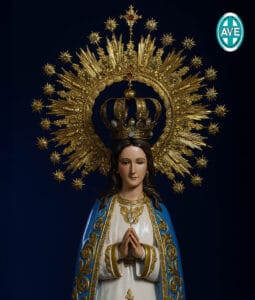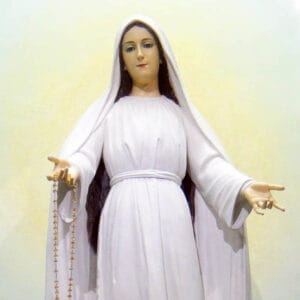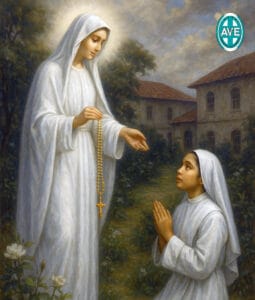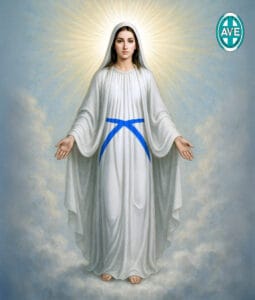The first legend involved a boy, Krishnanessti Sankara Narayanan who is from a Hindu village 10 kms. from Nagapattiram. He had the chore of bringing milk in a jug for a wealthy gentleman residing in Nagapattiram and on the way, he would pass by a great banyan tree, the national tree of India, underwhich was a refreshing natural tank of cool water. According to another ancient legend, the banyan tree was a haunt of evil spirits residing there and when St. Thomas, the Apostle passed and wanted to partake of the cool water, he was disturbed by the demons. Humbly invoking God, the doubting Thomas expelled the malignant spirits from the banyan tree and happily thereafter, none of the passersby were disturbed or made ill by them. Hence, it became a favorite place to rest by travelers in between two distant towns. Consequently, on a hot summer day, the boy decided to take a nap by the pool. He was awakened by the sweet voice of a woman waking him up. When he awoke, a beautiful lady and her child with rays of light emitting from them stood before him. She was asking for some milk for the baby. Krishnanessti kindly gave them some still puzzled how she was able to tell that the contents of his jug was milk.
The boy went on to Nagapattiram to the rich man who ordered him the milk and honestly explained why he was a bit delayed. The man was a bit annoyed that his order would be lacking because the boy had been kind to a stranger. However, he noticed that the milk in jug was overflowing and having sensed something unnatural, he asked the boy to open the jug and true enough, it was filled to the brim. He then asked the boy to bring him to the place where he saw the woman and the child and he obliged. Arriving there by the pool where the boy slept, he prayed and touched his forehead on the soil which the boy imitated. He then also found himself in the presence of the beautiful woman and her child. She asked him to build a home there where travelers can repose. The rich man built a thatched hut by the pool. This happened about 1580 AD.
On the second legend, there was this woman who sold buttermilk for a living and she had a lame child whose condition was like that since birth. This boy helped his mother sell the buttermilk but she would stay in another spot farther so that they can have the advantage of selling their merchandise to more people. The boy was left on a mound near the banyan tree a stone’s throw away from the hut where travelers rest. Having no sale for the day, the boy became sleepy and was lulled to sleep. He was awakened by the sweet voice of a woman rousing him to awaken. When he awoke there was a young beautiful woman with child who was asking him for some buttermilk for her child. They seem to be not from earth because they were shimmering and emitting soft light. Kindness overcame him and despite his mother’s possible anger he gave her a bowl by which she fed her child. When she returned the bowl, she told her to find a rich Christian merchant man in Nagapattiram with the instructions of building a place where people can pray on the same spot where they were conversing. The boy said he was much willing but owing to his inability to walk very slowly due to his condition, she asked the lady how he could do it when the town was about 10 kms. away. But the Lady insisted that he rise up and go quickly on his way. Upon her insistence, he got up and found he could do it. He even jumped and found he could do it too. And thus, he rushed running to Nagapattiram stopping only to realize that what happened to him was true and that he has truly and completely healed.
Reaching the town, he found the man at once and he didn’t have the difficulty of explaining as he had dreamt the night before of the very same thing, that a boy would come to fetch him and bring him to a place where he will build a chapel. And so, they went to the mound near the banyan tree where they found the mother weeping thinking all along that something bad had happened to her lame child. However, when she saw the boy, she was overjoyed to see that he can already walk like everybody else. Thus, the three of them prayed on the mound to Our lady and the Child Jesus which the Christian man explained to be the source of their great fortune. This happened circa 1620.
The third legend concerns a rich Portuguese merchant whose ship was on the way from Macao, China to Colombo, Ceylon (Now Shri Lanka) was battered by a sudden squall. The merchant and his crew thought they will perish in the sea storm but the merchant had a sudden inspiration. He told the crew that they pray to Virgin Mary, Star of the Sea and they all did. After praying and singing the Ave Maristella, that part of the Bay of Bengal became calm and the ship needing repairs came to dock by the same spot where the two former legends occurred. Having landed safely, they said their thanksgiving in the chapel near the banyan tree and decided to build a bigger church there. There, every year they make improvements on the church they were building until it became a real house of worship where masses are said regularly. This was around 1650 and the church they built became popular not only for Christians but for Hindus and Muslims as well where they recognize a common mother, “Arrokiya Annai” where Annai means mother, the Mother of Good Health (arokkiya means very pious and healthy); the Virgin of Velai or Velankanni. The multi-religious common feast precedes Vatican II’s ecumenism by hundreds of years. In 1771, Fr. Antonio del Rozario became the first parish priest.
Now, a very popular pilgrimage site even as “Lourdes of the East”, Velankanni is known for the Virgin of Good Health mostly attributed possibly to the healthy qualities of milk products. Also, on Velai which connotes livelihood or means of living, refers possibly to selling which was the common livelihood in the legends; selling of milk and buttermilk, and merchandising by those who built the huts and church, aside from the sailors, as seamanship is also plainly, means of livelihood. Finally, we dwell on the last legend and that is of Nagapattiram which used to be Nagoor or the dwelling of serpent gods. It is said that from Velankanni, St. Thomas came to Nagoor and expelled the demon serpents living there so that it would become habitable to humans and not just a place where humans are sacrificed to the serpentine gods. Nagapattiram therefore connotes Lordship or testament over serpent demons (pattiram -deed, document, lordhip; naga-cobra).
Tariq Suleiman
Karam M. Zingh
Daniel Santos





